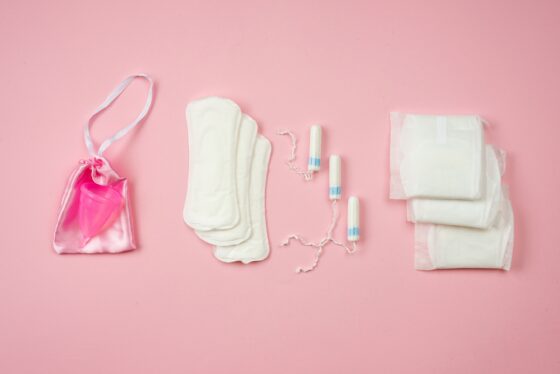
Using means to get a regular period, get the blood flowing, or use a cloth to catch it: Over the centuries, women adopted various practices to manage their periods, before menstrual products appeared.
Remedies for Regular Menstruation
Since ancient times, medicine has been interested in menstruation, but has not understood them for centuries. “Back then it was thought that women need to regularly evacuate this blood to be healthy”says Nahema Hanafi, lecturer in modern history at the University of Angers.
This view has dominated medical circles and society throughout the ages. In modern times (i.e. from the 15th to the 18th century), to promote the regular drainage of this blood, “women apply remedies, for example enemas, do physical exercises or take emmenagogue plants” (which regulate the menstrual cycle). It is also from ancient times that a derogatory view of menstruation arose, whereby this blood was regarded as impure.
A subject that is not always taboo
The women of the same family or community mainly informed each other. But they also discussed the rules with the men. “In medieval and modern times, we talk about menstruation because it is a crucial health topic that affects the whole family”, says Mrs. Hanafi. For example, noble women mention their menstruation in their correspondence with their uncle or their father.
The rules become taboo in the 19th century, with the arrival of the bourgeoisie, which, according to the historian, establishes new social models. Modesty imposes itself as a feminine virtue. “In this movement, we are depriving women of everything that has to do with body and sexuality, so that they can no longer be informed and discussed about these topics”says Nahema Hanafi.
Flow or bedding
Throughout history, women have mostly worn skirts or dresses. The peasant women let the blood flow against the body. The women of the bourgeoisie or the nobility used cloths to collect it, held in place with buttons or hooks, in the absence of panties.
Note that women had fewer menstrual cycles than now, partly due to more pregnancies. The median age of onset of the first menstrual period was also later: nearly 16 years around 1750, up from 12.6 years today, according to the National Institute of Demographic Studies.
Success of sanitary pads and tampons
The first menstrual products appeared towards the end of the 19th century, mainly in the United States and the United Kingdom. These ancestors of towels were: “rough, wide and difficult to wear because they were fastened with an elastic waistband and ties”describes Sharra Vostral, professor of history at Purdue University in the United States.
Towels distributed from the 1920s, supported by advertising, in a context of growing consumption. Tampons do the same thing from the 1930s.
Women were considered vulnerable during their periods and “these products allowed them to pretend they weren’t having their period to overcome the prejudices that came with it” and to continue their professional or leisure activities, Ms. Vostral underlines.
The menstrual cup also appeared in the 1930s, but did not become widespread until the 2000s.
Goodbye blue blood?
Washable pads, sponges and menstrual panties: Women have been given new options for their menstrual days in recent years. “It took a long time to offer menstrual products that meet the needs and comfort of women”notes Elise Thiébaut, author of “This is my blood”†
At the same time, the subject of rules comes up in the public debate. On social networks, accounts like “A Fit of Anger” inform young people and associations, such as Elementary Rules, fight against precarious menstruation. And ads now show menstrual blood as red liquid instead of blue.
The sign of the end of the taboo? “Speech has been unleashed in an exceptional way over the past five years, but it’s in certain circles, certain generations, certain countries,” nuance Elise Thiebaut.
(AFP)
(Photo credit: ISvyatkovsky/Getty Images)